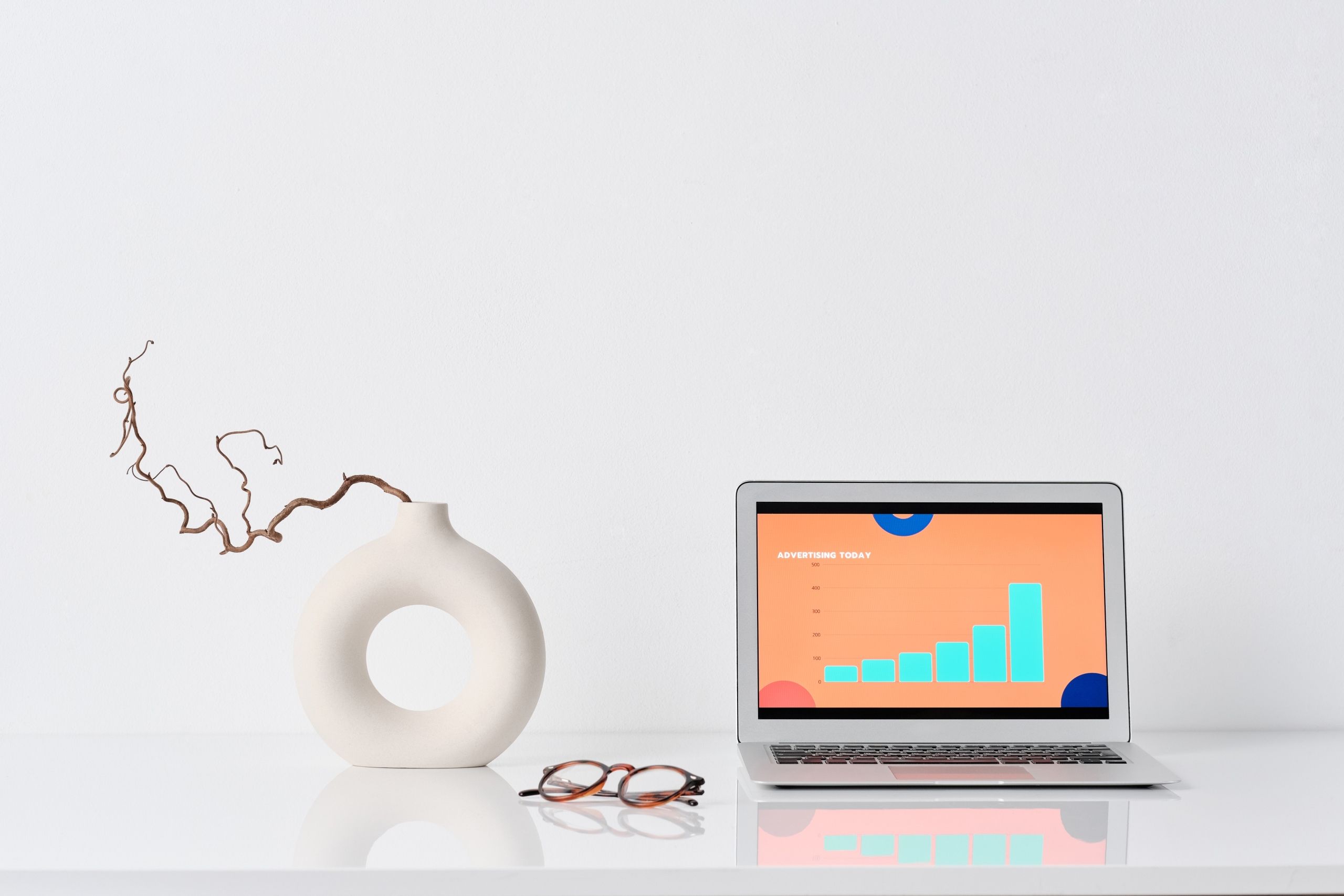Types of Marketing Channels:
TOP-5 That Furniture Retailers Use the Most
Marketing encompasses a huge range of tactics, business models, and channels. Nowadays, furniture retailers use a variety of marketing platforms to advertise their products and services. The 5 most popular types of marketing channels are search engine marketing, email marketing, social media marketing, online advertising and content marketing.
In the following marketing channel types guide, our CGI company will summarize the top 20+ tools to help you focus on getting more customers. This is a broad list that covers a lot of different marketing approaches that need to be synthesized into one strong omnichannel strategy. Some may be completely new to your business and some may just give you a better insight into online marketing.
This article starts with a high-level overview of what marketing channels are and then dives into each type in greater detail. By the end of this piece, you’ll understand how each channel can help you grow your business!
Let’s get into it!
The Building Blocks of a Modern-Day Marketing Plan

Marketing is the process of planning and executing the strategy that will lead a company’s success. It includes everything from developing a brand identity to communicating with customers and prospects, to generating leads for sales opportunities.
Marketing is a complex process that involves many different types of channels and strategies. It’s important to understand the different types of marketing channels so you can build an omnichannel marketing strategy, the way that is best suited for your business goals.
What is a Marketing Channel?
Marketing channels are the methods that businesses use to reach their target customers. There are many different types of marketing channels available to furniture retailers, but the most common ones include digital, email, and social media marketing.
A marketing channel is a form of communication through which businesses can build, maintain and grow relationships with their clients. Additionally, they include the way customers interact with your business and purchase your products. This can include everything from websites, social media profiles, and blogs to in-store displays.
How Many Types of Marketing Channels Are There?
When you consider that most furniture market leaders typically use the same set of channels, namely the internet (e-commerce) and brick-and-mortar, you might wonder how they make effective use of such a limited selection. The answer lies in the fact that these channels can be broken down into several subcategories, as we explore below.
Why Use a Variety Types of Marketing Channels?
Marketing channels, when used together and in the right combination, can produce a synergistic effect that is greater than the sum of its parts. In other words, each marketing channel can be used to support and complement the others. By using a variety of different channels, businesses can reach more customers and increase sales, improve customer engagement, and brand loyalty.
The Best Types of Marketing Channels Furniture Retailers Use
Here’s what it takes to stay competitive in today’s furniture retail marketplace. Make sure to bookmark the tools, platforms, and tech solutions you’ll need to get there.
#1. Search Engine Marketing

Search engine marketing (SEM) is one of the most effective ways to get products and content in front of potential target customers. It’s also cost-effective compared to other forms of advertising, making it a good choice for businesses on a budget. SEM works by getting a website to appear at the top of search engine results pages (SERPs) when people search for keywords related to products or services.
Google My Business – Free Tool by Google
Google My Business is a free tool by Google that helps businesses of all sizes manage their online presence. It’s a way to claim a company on Google, create and update a Google+ Page. Google My Business allows businesses to publish working hours of physical stores, add photos and videos, set up links, reviews, and get verified.
Website
Furniture retailers have to have a website, and the good ones realize that their website is an integral part of their marketing strategy. The best website is not only informative and attractive but also easy to navigate and has a user-friendly interface. It has all resources to help customers find a store location, get information about the brand and products.
The furniture retailer should also be sure to include a chatbot option on the website, which can help answer commonly asked questions. It can direct users to the right information and move potential clients toward purchasing.
Ecommerce Store
While each of the many types of marketing channels has its advantages and disadvantages, there is one channel that has proven effective in recent years. It is an online eCommerce store combined with email marketing, online advertising, and content marketing.
The leading furniture retail brands now operate their own online stores and shopping apps which allows them to extend their reach far beyond physical stores. They adopted 3D technologies for product visualization and digitalization; understand the huge value of SEO; collecting and analyzing data. The market leaders offer a better customer experience, which allows customers to search and browse products using their computers, tables, mobile devices, and even view it in their own homes with AR.
The other essential element is customer service. The market leaders are investing in the ability to provide real-time, customized product recommendations based on previous purchases. They’ve adopted a service-based model that focuses on providing value and convenience to customers through easy online shopping, fast delivery and returns.
Cross-selling, down-selling, and up-selling are all a part of the customer experience. It’s critical for furniture businesses to offer a variety of products and services that customers can purchase to enhance their overall shopping experience. For example, when they buy a sofa, they might also want to throw pillows, lamps and rugs—and if they don’t see them immediately on your site or app, they probably won’t buy anything at all!
Once you’ve got a powerful eCommerce store and some effective marketing strategies in place, you’re ready to start driving traffic to your site.
Shopping Apps
Shopping apps are possibly the most convenient way to shop for furniture online. People can view their favorite items at any time from anywhere. Furthermore, it is possible to find a great coupon that gives a discount on purchases or free shipping.
In recent years, augmented reality (AR) has become a major trend in the world of e-commerce. With AR technology, shoppers can now see how furniture would look in their homes before they purchase it—all without leaving their living rooms!
However, people do not usually download new apps on their phones on their own. So, it is important to promote your app in other ways as well. For example, you can create a landing page that explains what the app does, who will benefit from using it, and why they should download it. Then drive traffic to that page with paid advertising or social media ads.
The key is to have a seamless experience between websites and mobile apps so customers don’t have to go searching for a different URL or download another app. It’s also important to make sure that your catalog is optimized for mobile search results—it needs to be easy to find on search engines like Google and Bing. This can be achieved by optimizing the e-store, product pages, and blog content for SEO and linking it up with social media platforms.
Search Engine Optimization (SEO)
With the advent of search engine optimization (SEO), furniture retailers are encouraged to focus on building a strong online presence that is friendly to search engines. SEO can be defined as the set of processes and practices used to improve the visibility of a website or a web page in search engines via the “natural” or unpaid (“organic”) search results. It’s important because more than half of all Internet users rely on search engines when looking for products and services online.
To make sure that your furniture store is present in the results, you need to follow certain SEO guidelines.
- Get a properly optimized website so it will be easily visible in search results.
- Use keywords that people go for when searching for furniture on a search engine.
- Create readable and useful content full of keywords and phrases connected to searches.
- Incorporate relevant, attractive, and optimized images and videos.
- Update websites and e-stores regularly with new content and information. This will help Google know that they’re an active site and keep rankings high.
Landing Pages
A landing page is a one-page website that directs traffic from search engines or social media sites like Facebook and LinkedIn. Furniture retailers use landing pages for two purposes: to convert customers and collect email addresses, online forms, or walk-in traffic at physical locations. They’re built with a clear call to action that focuses on driving people to a specific action.
Lead magnets are incentives that are given away in exchange for contact details, email addresses, etc. For future businesses, it can be a coupon, a free item, a downloadable whitepaper, a consultancy video, or anything perks that add value for customers and build trust with them.
Online Marketplaces \ Third-Party Platforms
Today, online marketplaces and third-party platforms are the two most direct ways for furniture retailers to reach customers. Online marketplaces such as Amazon, Shopify, Wayfair, Etsy, and Target all connect consumers with a marketplace of sellers to purchase products. These platforms allow for convenient purchasing and shipping directly to the consumer’s door.
For furniture retailers, these platforms can be a great way to build brand awareness and generate sales. However, they also can be difficult to manage due to the high level of competition on these sites.
#2. Email Marketing

One of the most effective channels is that old standby — email marketing. With an email database that boasts over a million subscribers, Wayfair’s marketing team has found success with several email strategies—most notably, they’ve gotten great results with their sales emails. The key is to make sure that emails don’t just contain product information. Instead, putting customers first by sending relevant information that also gives them an incentive to purchase. Brands can also keep shoppers engaged by following up with email campaigns that feature exclusive discounts or news about upcoming in-store events.
In addition to sending individualized sales emails to customers based on their past purchases and browsing behavior, businesses can take advantage of automated email marketing campaigns. These will allow to send out a bulk email announcement to all the subscribers at once instead of having to create multiple customized emails for each customer.
#3. Social Media Marketing

Social media marketing is a great way to engage with customers, grow a brand, and increase sales. Paid ads or boosted posts provide direct access to consumers and enable direct marketing of products to them. It also helps attract new audiences by consistently posting thoughtful, and visually appealing content on Facebook, Instagram, and Pinterest. Each of these platforms is used for slightly different purposes, so here’s a quick rundown of what each platform does best:
Facebook is the most popular social media platform, with 2.934 billion monthly users around the world. It offers a lot of benefits for furniture retailers:
- It has high market penetration and brand awareness, meaning that there are more people on Facebook than any other social network.
- It enables direct marketing via paid ads and boosted posts.
- It’s easy to use, so it’s less daunting than some other platforms for beginners.
Facebook allows for more in-depth engagement than other platforms because users are more likely to share personal information on their profiles. The platform is ideal for promoting products or services that are intended for purchase in person at a retail location because it allows you to target specific demographics based on age range and location. You can also use Facebook’s Audience Network to reach people who aren’t directly connected with your business but may be interested in what you’re offering.
Instagram is one of the most popular social media platforms, with over 1.44 billion monthly active users. It’s also one of the most effective platforms for businesses because it allows you to target specific audiences based on age range, location, and interests.
You can use this platform to promote your business or products by creating branded profiles and posting engaging content that encourages user interaction with your brand. Instagram is also a great way to advertise special offers or promotions because its users tend to be fairly loyal once they’re engaged with your brand.
Pinterest is not only a social media channel, it is a search engine similar to Google, only visual. Furniture retailers can use it to improve their search engine marketing (SEM). The platform makes it easy to find and share product images called Pins. Those drive traffic to a website, product page, or social media. It has over 433 million monthly active users around the world every month! And it is easier to rank and drive the target audience to purchase with Pinterest because furniture and home decor are one of the most trending niches on it.
#4. Online Advertising

The best way for brands to reach their target audience is with online advertising. As such, businesses should use Facebook, Instagram, and Google Ads to not only promote their products but also deliver relevant content that will engage consumers. That’s how the best digital advertising campaigns have been ceated in recent years.
Marketers can run an ad campaign based on specific demographics, interests, and behaviors as well as set up conversion tracking so they can see which ads are driving sales.
Display Ads
Display ads are a type of online advertising that is shown on a website, app, or mobile device. These ads can be used to promote products and services in various ways, such as by showing them to users who fit specific demographic profiles.
Display ad campaigns can be used for brand awareness, lead generation, and direct sales. They typically involve placing ads on websites where thousands or millions will see them of people at any given time.
Remarketing
Remarketing is a type of display advertising that allows marketers to show ads to users who have already visited their website. The goal is to get these users back on the site and hopefully convert them into paying customers. This can be done through various tactics, such as displaying banner ads on other websites in the same niche as well as running retargeting campaigns on social media platforms like Facebook and LinkedIn.
Direct Mail/Catalog Campaigns
Direct mail and catalog campaigns are forms of direct marketing. They are used to reach customers who have already shown an interest in a product or service. Companies send out mailers or catalogs that showcase their products, along with special offers or discounts. These methods can be used to gain new customers as well as re-engage existing ones.
Referral Marketing
Referral marketing is a form of word-of-mouth marketing. It’s all about getting people to recommend products they like to their friends. This can be a very effective way to generate sales leads and drive traffic because it’s organic and authentic.
Affiliate Marketing
Affiliate marketing is a form of indirect marketing that allows businesses to sell their products by paying a commission to people who have referred potential customers. It is a great way for small firms to reach a wider audience since it doesn’t require any upfront capital. Affiliates simply promote the business and get paid when they refer people who make a purchase.
#5. Content Marketing

Content marketing is a strategic marketing approach focused on creating and distributing valuable, relevant, and consistent content to attract and retain a clearly defined audience—and, ultimately, to drive profitable customer action. Companies of all sizes create content on a daily basis that is designed to inform, persuade, or motivate people to take specific actions.
This can be anything from a blog post or video series on YouTube to an email newsletter sent out once a week. Content marketing includes all forms of traditional media plus newer digital delivery methods such as 3D\AR interactive tools, podcasts, etc.
Inbound Marketing
Inbound marketing is a subset of content marketing that uses search engine optimization (SEO), email marketing, social media marketing (SMM), and display advertising to attract customers from external sources. It’s a strategy that uses content and digital marketing to attract customers through the sales funnel.
Blogging
The purpose of a professional blog is to drive traffic and build a community around content that resonates with its target audience. A blog should be an extension of a brand, showcasing what makes it different from competitors and attracting prospects who want to learn more about those differences. It should be updated regularly with new content that’s relevant, engaging, optimized for search engines, and helpful.
Furniture retailers can use blogs for many purposes—from product reviews or tutorials to industry news or commentary. Blog content on an e-commerce website or store is a valuable opportunity to:
- position the company as an expert in its field;
- drive free traffic via search engines, social media, and email newsletters;
- collect emails for marketing campaigns;
- build a community of loyal followers;
- generate sales leads and increase conversion rates.
By publishing high-quality content on blog helps brands improve online visibility, increase website relevancy, reach potential customers and boost search engine rankings.
3D Content
Currently, most furniture retailers are using 3D technology to showcase products in their online stores. IKEA uses this technology in its online catalog and showrooms, allowing customers to view models and make adjustments for customization. Other popular companies that use 3D content creation services include Wayfair, West Elm, Amazon, and Crate & Barrel.
Why use 3D?
Immersive customer experience: 3D models communicate the look, feel, and functionality of a product better than traditional flat images.
Increased conversions: 3D сontent helps customers by allowing customers to personalize products and “try before buying” — since 3D models are compatible with Augmented Reality, they can visualize items in their environment.
Improved SEO: Google can now “see” a product as a 3D object on its search engine results page, which guarantees higher click-through rates.
Higher ROI: 3D content creation is a more cost-effective option for brands than traditional photography and video shoots. It’s also easier to update or create products from scratch in 3D, so companies save money on production and prototyping costs.
To sum everything up, the most important takeaway here is that you should use all types of marketing channels available to you. While they may be difficult to analyze, they can offer pretty valuable data. Rather than put your money on a single campaigning strategy over another, use them all.
Furniture retail is a dynamic and exciting industry, but there’s no need to take on the challenge of marketing your store alone. We provide a full range of 3D modeling services to help your furniture business stand out from competitors. We can create stunning content for marketing: from digital catalogs and product prototypes to AR models, print materials, and SEO copywriting.



Leave a Reply
Want to join the discussion?Feel free to contribute!